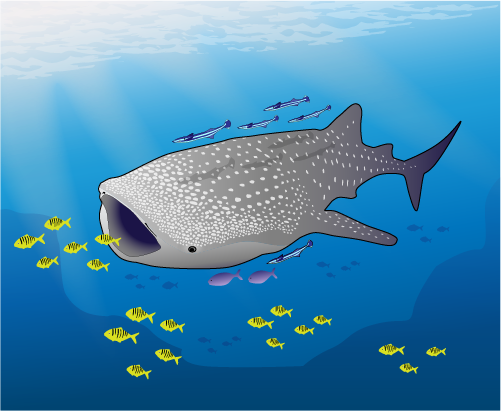The whale shark is the largest fish in the world. This gigantic ocean creature can grow up to twelve meters long and weigh more than thirteen thousand kilograms. Although a whale shark and a whale look similar to each other, these two animals are not biologically related. It is known as a "whale" shark because of its massive, whale-like size. Scientists, however, classify the whale shark as a species of shark based on key characteristics it shares with other shark species. For example, like other sharks, the whale shark’s skeleton is composed of cartilage rather than bone. Moreover, the whale shark has leathery skin instead of scales—another distinguishing feature of sharks compared to other fish.
Despite its giant size, the whale shark does not pose a danger to most other animals, including humans. Whale sharks feed on small prey in the ocean, including small crabs, jellyfish, and tiny fish. Because whale sharks must consume a large amount of food to survive, they are often found in areas where there is a high concentration of food sources. While feeding, the whale shark opens its massive mouth to scoop up the tiny creatures, and water is strained out through its gills. An interesting fact about the whale shark is that it has over three thousand teeth, but one could hardly see any of them when a whale shark opens its mouth. This is because these teeth are extremely tiny, and they are not used for feeding.
Like other sharks, whale sharks are under threat. In the Red List of Threatened Species published by the World Conservation Union, the whale shark is listed as “endangered.” Some of the major threats to whale sharks include oil and gas drilling, fishing, and other human activities. Much needs to be done to protect whale sharks as well as other shark species in the future.
